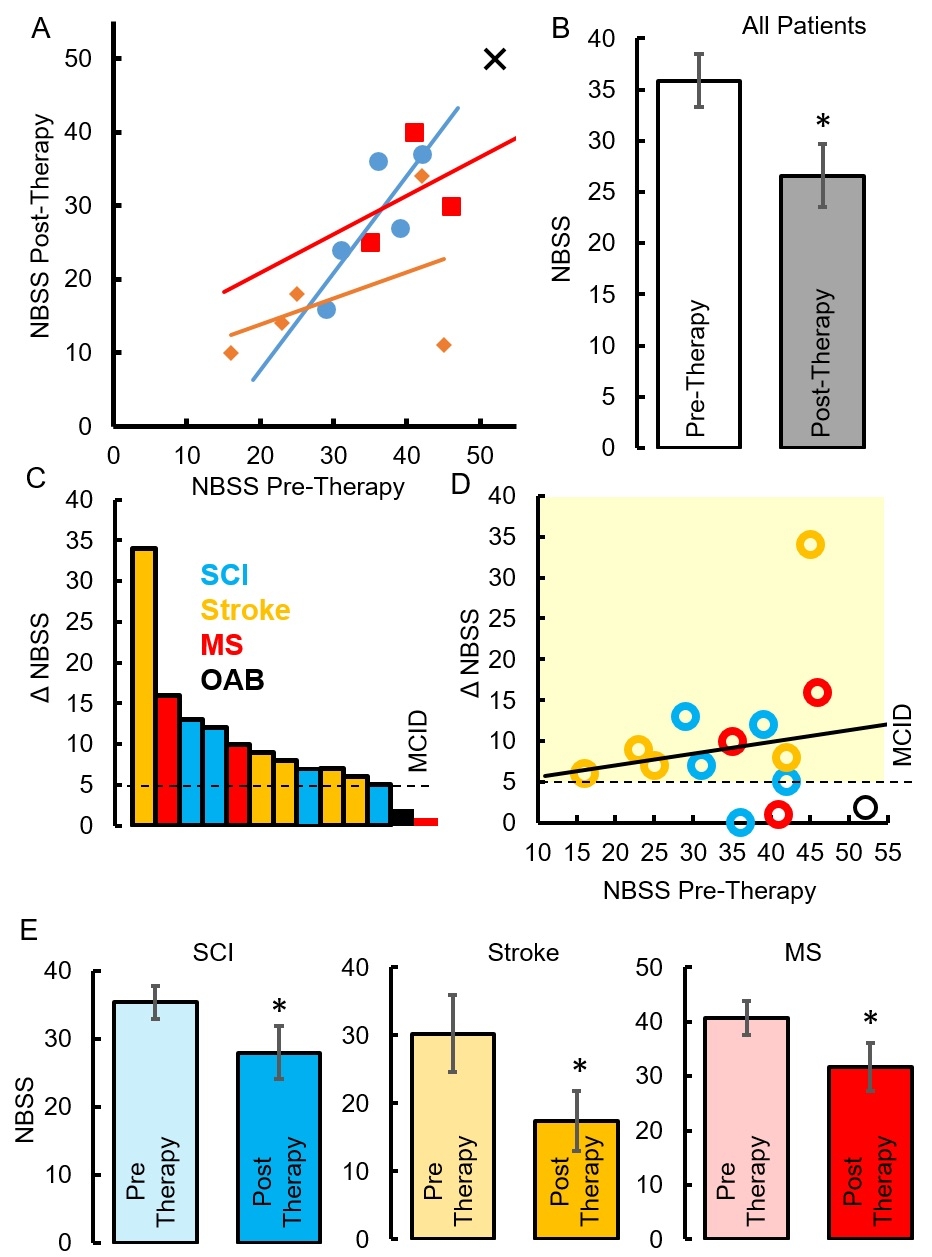You are here
Waking up the Spinal Cord with Transcutaneous Neuromodulation
Speakers
Abstract
Over one million people in the United States cannot walk and hundreds of thousands have lost control of vital bodily functions due to spinal cord injury (SCI). Extension of recovery and consequent functional improvements are inversely related to the severity of injury (complete vs. incomplete). These improvements often refer only to the segments located immediately below the lesion, and can very rarely bring real functional benefits, such as independent standing and stepping. Current treatments primarily focus on adapting the patient to the disability rather than restoring lost function.
We have found that non-invasive stimulation of spared spinal cord networks contributes to recovery of motor function and autonomic function in individuals who have complete motor paralysis. Using this completely noninvasive interventions, we have demonstrated recovery of function of multiple end organs including hand and arm, bladder and urethral spinchter, lower extremity and trunk by retraining the neural networks within the spinal cord of human subjects that have been completely paralyzed for 1- 34 years. We believe an elemental spinal network that could generate the observed output patterns with electrical spinal cord stimulation in the presence of proprioceptive input in our paralyzed subjects. Such a pathway architecture can conceptually account for all interactive observations made when guided by activity-dependent mechanisms (i.e., stimulation, pharmacology, conditioning, and training). We have reported progressively larger amplitudes in spinally evoked motor potentials with increasing current via transcutaneous stimulation, indicating an increased excitability of the sensorimotor pathways. This emphasizes the extensive modulation that can occur in the excitability of the spinal networks below the motor threshold and that once this threshold is reached more motor units are recruited. It appears that the increased excitability of the interneuronal spinal networks that normally generate a largely random-stochastic pattern of excitation of the motoneurons can do so even after complete paralysis. These results raise new and exciting questions about the anatomical versus functional completeness of the injury, the potential to use spared but perhaps nonfunctional descending axons across the lesion site, and re-activation of dormant neuronal networks below the injury using noninvasive painless spinal cord stimulation.


